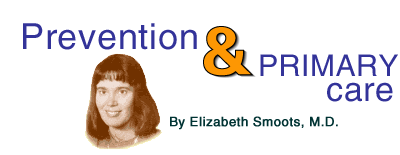
Ward off skin cancer with simple protective tips
Living in Arizona is hard on the skin. After 30 years of it, my father developed skin cancer on his neck, and later on his nose. These cancer spots required several surgeries -- some extensive -- before he was cured. The scars still tell the tale, and he must perpetually watch out for new cancers.
Back when my dad was getting a heavy dose of ultraviolet radiation in the southwestern desert, sunscreen lotion wasn't widely available. Sure, he usually wore a hat -- but it's hard to escape the ever-present sun when you're active and outdoors in Arizona.
Due to excess sun exposure, some 600,000 people develop skin cancer each year in the United States. The numbers continue to rise for the most common kinds of skin cancer -- basal cell carcinoma, squamous cell carcinoma, and melanoma -- a fact some researchers attribute to Americans' growing leisure time, which many spend outdoors.
The good news is, improved sunscreen lotions and greater awareness of sun-safe habits have improved our ability to prevent skin cancer.
Sunscreens
Sunscreens on the market provide better protection than ever before against skin cancer. Most sunscreens block out ultraviolet-B (UVB) radiation, high-energy wavelengths that cause sunburn and some skin cancers. Sunscreens labeled "broad spectrum" also provide some coverage against ultraviolet-A (UVA) waves. This type of radiation is more prevalent but less potent, and it may lead to premature aging or some kinds of skin cancer. Most products provide only partial protection against UVA waves.
Just because you've slathered on a sunscreen, however, doesn't mean you're immune to skin cancer and can now bask in the sun. Remember that sunscreens don't guard against all harmful effects. Follow these tips to improve your protection while still having fun in the sun:
Choose a sunscreen with both UVA and UVB protection and an SPF (sun protection factor) of 15 or higher. Also look for lip balm that contains sunscreen.
Apply sunscreen 20 to 30 minutes before sun exposure to allow adequate binding to your skin.
Use enough sunscreen to do the job -- about one-half to one teaspoon for your face and one ounce for the rest of your body. A recent study showed most people apply only one-quarter of the necessary protective amount.
Reapply sunscreen every 2-3 hours and after swimming. All sunscreens can be rubbed, sweated, or washed away -- even those that claim to be waterproof.
Sensible skin precautions
Of course, the best way to ward off skin cancer is to minimize your exposure to the sun. Here's how:
Sunlight is the brightest between 10 a.m. and 4 p.m., so limit your outdoor activities during these hours. If you have to be outside, stay in the shade as much as possible.
Wear a wide-brimmed hat and sunglasses that guard against UVA and UVB rays. Tightly woven clothing and shirts with long sleeves also protect your skin. Clothes made from ultraviolet-protective fabrics may sport up to a 30 SPF rating.
Even on cloudy days, wear a long-sleeved shirt and sunscreen; up to 80 percent of ultraviolet radiation penetrates cloud cover. (Up to 50 percent reaches underwater, too, so apply a sunscreen before swimming.) Remember that sand, concrete, water, and snow reflect and intensify the sun's burning rays on your skin.
Limit your use of tanning beds. Sunlamps may cause wrinkling or skin cancer, and "base" tans do nothing to protect you from sunburn.
Elizabeth Smoots, M.D., F.A.A.F.P., is a board-certified family physician in Seattle, Washington. A fellow of the American Academy of Family Physicians, Dr. Smoots writes about prevention and primary care medicine.
Related links:
Outside Link: The Skin Cancer Foundation
Outside Link: The National Skin Cancer Prevention Education Program

